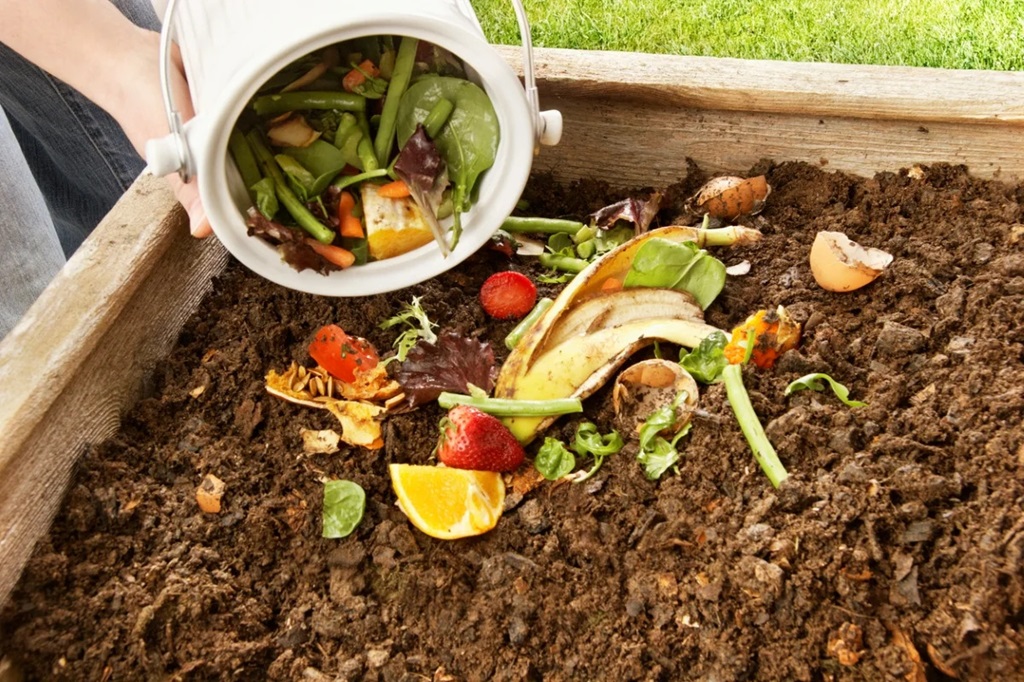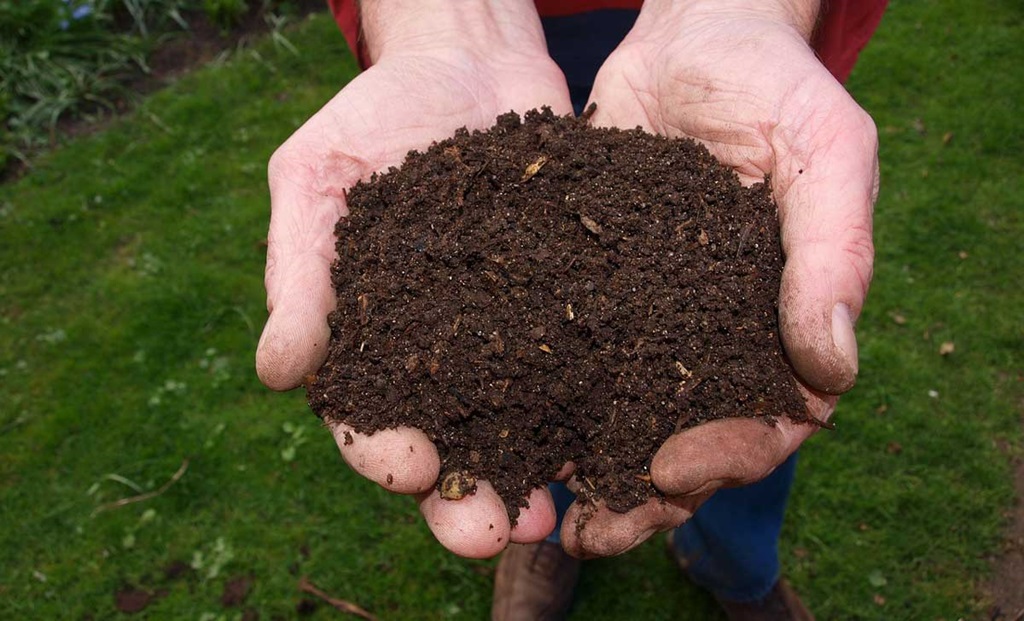
Keeping moisture in soil is crucial for healthy plants and gardens. Proper soil moisture helps plants absorb nutrients, prevents disease, and allows them to photosynthesize efficiently. There are many techniques gardeners can use to conserve water and retain moisture in soil. In this comprehensive guide, we will explore how to keep moisture in soil and provide actionable tips for keeping your soil optimally hydrated.
Why Soil Loses Moisture
Before learning how to keep moisture in soil, it helps to understand the reasons why soil dries out in the first place.
There are four primary causes of moisture loss in soil:
Evaporation
Evaporation is the process by which water changes from a liquid to a gas. As the sun heats up the soil, water molecules absorb energy and escape into the air. Evaporation happens predominately at the surface level of the soil. It transpires faster in hot, dry, and windy conditions.
Runoff
Runoff occurs when water moves across the top of the soil rather than soaking in. Compacted soils are particularly susceptible to runoff. Sloped areas also encourage water to flow downhill before it can penetrate the ground. Runoff results in wasted water that plants cannot access.
Leaching
Leaching happens when water drains through the soil too quickly, out of reach from plant roots. Sandy soils that lack organic matter are prone to leaching. Heavy rains can also leach nutrients from the soil.
Transpiration
Transpiration is the process by which plants release water vapor through tiny pores on their leaves called stomata. This moisture is lost to the atmosphere. Transpiration allows plants to pull water and nutrients from the soil and cool their leaves, but it also depletes soil moisture reserves.
Now that we understand why soil dries out, let’s explore techniques to maximize moisture retention.
1. Add Organic Matter

One of the best things you can do for water conservation is to increase the organic matter in your soil. Organic matter acts like a sponge, holding onto moisture and preventing runoff and evaporation. It also encourages healthy microbial life and improves soil structure.
There are many sources of organic material to choose from:
- Compost – Compost acts like a moisture magnet in soil. It contains decayed plant matter that helps retain both water and nutrients that plants need. Work 1-3 inches of compost into the top 6-12 inches of your beds.
- Aged manure – Manure, particularly from herbivore animals like cows, sheep, and horses, provides an excellent source of organic matter. Make sure manure has been aged at least 6 months before applying.
- Leaf mold – Leaf mold is simply decomposed leaves. It takes 1-2 years to break down but retains moisture very effectively.
- Peat moss – While not sustainable, peat moss offers exceptional water-holding abilities. Use it sparingly in compacted areas.
- Wood chips – Coarse wood chips are a slower decomposing option for increasing moisture retention. Use them on paths and bare soil.
- Grass clippings – Fresh grass clippings can be worked into beds or used as garden mulch. Let them dry out first to prevent matting.
Improving your soil’s organic matter content should be an ongoing process. Focus on adding a 2-3 inch layer to beds each season.
2. Use Mulch
Applying mulch is one of the easiest ways to reduce evaporation and retain moisture in the soil. Organic mulches like wood chips, bark, straw, and pine needles create a protective barrier that prevents water loss. They also cool the soil surface and inhibit weed growth.
Some excellent mulching options include:
- Wood chips – Coarse, shredded wood makes an attractive mulch that decomposes slowly. Avoid using fresh sawdust, which can rob nitrogen from the soil as it breaks down.
- Pine needles – This acidic mulch helps condition soil. Pine needles allow water to pass through easily. Rake them around plants to a depth of 1-3 inches.
- Chopped leaves – Leaf mulch is free and abundant in autumn. Run leaves over with a lawn mower to chop them up before applying.
- Straw – Straw makes a suitable mulch around vegetables and annuals. It decomposes fairly quickly so will need reapplying.
- Newspaper – Layer sheets of newspaper (black and white pages only) up to 6 sheets thick and top with organic mulch. The paper will block weeds while allowing water through.
No matter which you choose, the ideal mulch thickness is 2-4 inches. Replenish as needed to maintain coverage.
3. Improve Drainage
Excess moisture is just as detrimental as dry conditions. Proper drainage ensures water can easily infiltrate the soil without becoming waterlogged.
Here are some tips:
- Aerate soil – Use an aerator tool or garden fork to punch holes periodically. This allows oxygen and water to reach roots.
- Amend soil – Incorporate organic matter like compost to lighten heavy clay soils that retain too much moisture.
- Plant cover crops – Cover crops like clover and rye add organic matter to improve drainage long-term.
- Build raised beds – Raised garden beds encourage drainage by elevating plants above compacted native soil. Fill them with a plant-friendly soil mix.
- Install drainage pipes – In areas with poor drainage, use perforated pipes surrounded by gravel to divert excess water away from garden beds.
- Grow plants suited to soil type – Ensure plants match the soil moisture levels in each part of your garden for the healthiest growth.
4. Water Efficiently
How you deliver water to plants makes a big difference in how much is absorbed versus lost to evaporation and runoff.
Here are smart watering practices:
- Water early morning – Watering in early morning reduces evaporation loss compared to daytime or evening.
- Water deeply – Long, infrequent soaks encourage deeper rooting and moisture retention in sublayers.
- Avoid overwatering – Take care not to oversaturate soil, which leaches nutrients and deprives roots of oxygen.
- Use soaker hoses – Soaker hoses deliver water directly to soil and plant bases, not surfaces vulnerable to evaporation.
- Install drip irrigation – Drip systems apply water slowly and exactly where it’s needed, avoiding waste.
- Water at soil level – Rather than overhead watering, use hoses, spot watering, or sub-irrigation pots that hydrate roots.
- Collect rainwater – Install barrels or cisterns to catch rain and runoff for reuse in the garden.
The goal is to provide thorough, well-timed watering that reduces the loss of moisture before plants can use it.
5. Group Plants Strategically
How you arrange plants also influences soil moisture conservation.
Some smart strategies include:
- Group by water needs – Zone your garden into sections for high, moderate, and low watering requirements.
- Use shade plants – Underplant sun-loving plants with shade-tolerant options to create more evaporation protection.
- Plant densely – Filling space with more plants means less exposed soil that can dry out. But allow adequate airflow to prevent disease.
- Use windbreaks – Create barriers around plants using taller crops, trellises, rocks, or solid fencing to reduce drying winds.
- Weed regularly – Weeds compete with other plants for moisture. Keep them under control to conserve water for desirable plants.
- Leave some areas bare – Gravel, stone, or wood chip-covered paths retain moisture better than bare soil.
6. Improve the Soil Structure

Soil structure refers to the arrangement of solids, liquids, and gases that make up soil. Well-aggregated soil with plenty of pore space retains moisture longer after watering and allows better access to water for plant roots.
Practices that improve soil structure include:
- Minimize soil compaction – Avoid walking on beds, especially when the soil is wet. Use raised beds with designated walkways.
- Reduce tilling – Excessive digging destroys beneficial soil structure. Focus on topdressing beds with compost instead.
- Grow cover crops – The deep roots of cover crops like cowpeas, rye, and buckwheat help create passages for air and water.
- Grow earthworms – Earthworm tunnels create pathways for moisture and oxygen while their castings add organic matter.
- Fertilize organically – Materials like manure, compost, and organic fertilizers add nutrients that boost plant-beneficial microbes.
- Control erosion – Use cover crops, mulch, and plantings to stabilize soil and prevent loss of topsoil.
Healthy, undisturbed soil retains moisture longer after irrigation or rainfall.
7. Choose Drought-Tolerant Varieties
Selecting plant varieties adapted to drier conditions is an excellent long-term strategy for reducing water needs in the garden. Certain vegetables, herbs, perennials, and ornamentals require less moisture to thrive.
Drought-Tolerant Vegetables
Many common garden veggies and herbs are considered drought-hardy once established:
- Tomatoes
- Peppers
- Eggplant
- Basil
- Rosemary
- Lavender
- Beans
- Cucumbers
- Melons
- Pumpkins
- Onions
- Garlic
- Potatoes
Choose heat-loving varieties bred to grow in hot, arid regions. Prioritize vegetables with deep taproots or tubers that can access subsoil moisture. Lettuce, spinach, broccoli, and other shallow-rooted crops will need more frequent watering.
Drought-Resistant Perennials
Perennials with thick, waxy leaves or gray foliage require less watering once settled in:
- Lavender
- Salvia
- Sedum
- Coreopsis
- Purple coneflower
- Russian sage
- Verbena
- Blanket flower
- Yucca
- Ornamental grasses
Group these plants together in full sun areas with sandy or gravel mulch to minimize required irrigation.
Drought-Tolerant Ornamentals
Many ornamental shrubs, trees, and succulents thrive in low moisture:
- Cacti
- Succulents
- Redbud tree
- Smoke tree
- Russian olive
- Cotton Lavender
- Juniper
- Pine
- Spruce
- Dogwood
Prioritize native, Mediterranean, or Southwestern U.S. varieties suited for warm climates and less water naturally.
Choosing plants aligned with local climate and moisture conditions reduces the need for frequent watering. However supplemental irrigation may still be needed during extended hot, dry periods.
8. Time Plantings Strategically
When you plant can impact soil moisture levels. Follow these tips:
- Plant in spring or fall – Avoid planting in the heat of summer when newly established plants require more frequent watering.
- Grow cool season annuals – Crops like spinach, lettuce, and peas use less water and can grow in winter or early spring when evaporation is reduced.
- Install new plants in fall – Planting in early fall allows root growth over winter so plants can access moisture from spring rains immediately.
- Sow cover crops – Plant cover crops like clover or rye in empty beds over winter. They prevent erosion and add organic matter before main season crops.
- Add new mulch before dry seasons – Replenish mulch before peak summer or winter to conserve the most moisture when plants need it.
Proper timing means you work with natural moisture cycles rather than fighting against them.
9. Control Weeds
Weeds compete aggressively with other plants for both water and nutrients in the soil. Eliminating weeds means less demand for these limited resources.
Here are organic strategies to control weeds:
- Mulch thickly – Mulch blocks light to prevent weed seeds from germinating. Replenish before the mulch fully decomposes.
- Pull young weeds – Pull weeds by hand while they are small and their roots are shallow for easy removal.
- Grow dense plantings – Crowd out weeds by keeping open space between plants to a minimum.
- Use cover crops – Low-growing cover crops like clover choke out weed seedlings.
- Solarize soil – In open beds, use black plastic sheets to raise soil temps during summer months to kill seeds.
- Maintain fertility – Weeds thrive in low-fertility soils. Keep plants healthy with organic fertilizer to outcompete weeds.
Ongoing weeding keeps moisture available for plants that benefit your garden.
10. Practice Conservation in Other Areas
Water conservation extends beyond just the garden soil. Here are other ways to save:
- Install low-flow fixtures – Low-flow showerheads, toilets, and sink aerators reduce water wastage in the home.
- Use rain barrels – Capture roof runoff in rain barrels to use for irrigation. Just 1/10 inch of rain on a typical roof yields over 50 gallons.
- Wash full loads – Run dishwashers and washing machines only when full to maximize water usage.
- Check for leaks – Leaky pipes, spigots, and broken sprinklers can waste thousands of gallons yearly.
- Sweep outdoor areas – Sweeping walkways, decks, and driveways prevents the need to hose them down with water.
- Take shorter showers – Set a timer as a reminder to keep showers brief.
Saving water not only helps the environment but also keeps more moisture available for your garden soil and plants.
Moisture-Conserving Garden Care Tips

- Check soil moisture before and after watering with a moisture probe for an accurate read of what plants are experiencing.
- Use soaker hoses and drip irrigation on timers to automate garden watering. Set for early mornings.
- Water transplants daily initially until their root systems can sustainably draw moisture from the surrounding soil.
- Add a new 1-2 inch layer of mulch before peak summer and winter months to lock in moisture during stressful times.
- Amend planting holes with compost to help retain moisture around the roots of new plants.
- Group plants with similar watering needs in the same beds and zones of your garden.
- Cut back on fertilizing during hot, dry spells to slow plant growth and water needs.
- Mask areas between crops with living mulches like clover rather than leaving soil bare.
- Harvest rainwater from patios, driveways, and roofs in rain barrels to use for irrigation.
- Consider installing simple greywater systems to reuse water from sinks, showers, and tubs for the garden.
- Hand-pull weeds after watering when the soil is moist for easy removal of roots.
- Add organic matter like compost to soil each fall to boost moisture retention all winter.
With some diligent planning and care, you can maintain optimal moisture levels throughout every season!
Conclusion
Optimizing soil moisture plays a crucial role in the health and productivity of gardens and landscapes. By taking steps to conserve water and improve moisture retention, gardeners can save time and effort while growing robust, thriving plants. Focus on adding organic matter, mulching, efficient watering, drainage, plant selection, and proper timing when planning your garden each season.
Combine these practices with moisture-conserving habits outside the garden for positive impacts far beyond just your plants’ roots! With some patience and commitment to these principles, you can maintain soil moisture at just the right levels through every weather pattern that comes your way.
Frequently Asked Questions
1. How can I tell if my soil needs water?
Check soil moisture daily by digging down several inches and squeezing a handful of soil. If it forms a loose clump, it has adequate moisture. If it crumbles, it’s time to water. You can also use a moisture meter for a precise read.
2. What is the ideal soil moisture level to maintain?
Most plants thrive best when soil moisture is between 50-75% of field capacity, meaning half or more of the total water the soil can hold. The exact preferred amount varies by plant.
3. How often should you water plants?
There is no universal watering frequency as it depends on factors like climate, soil type, and plant types. However, most gardens need a thorough soaking a few times a week, providing 1-2 inches per week. Check the soil to determine if plants need more or less.
4. When is the best time of day to water plants?
Early mornings, ideally between 4 am and 8 am, is the recommended time for watering. The temperatures are cooler reducing evaporation loss, winds are calmer, and plants have a full day to dry out, preventing diseases.
5. Does mulching really help conserve water?
Absolutely. Studies show mulching can reduce total water needs by 25-50% compared with unmulched beds. The organic materials reduce evaporation from the soil surface and moderate soil temperatures. Replenish mulch as needed.





